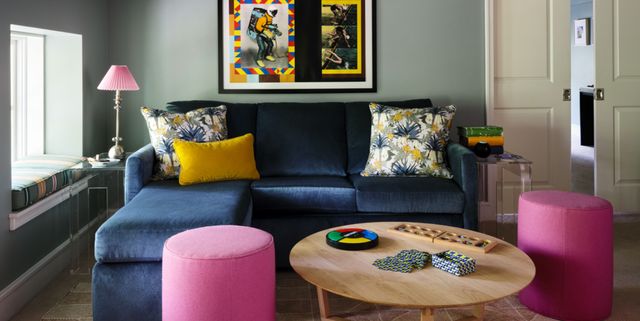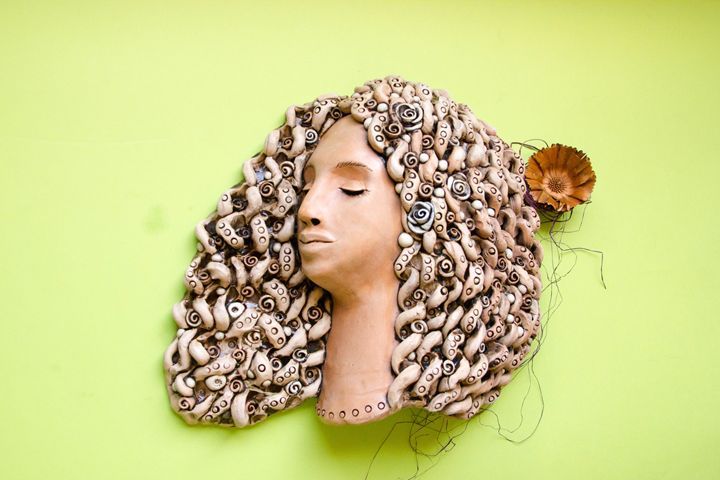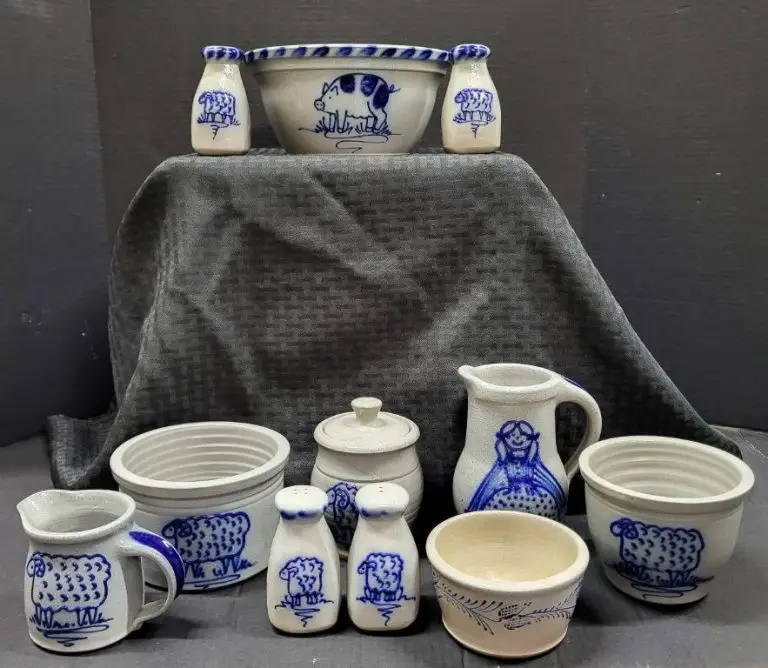What Colors Go Well With Robins Egg Blue?
Robins egg blue is a light blue-green color reminiscent of the color of robins eggs. The earliest known recorded use of “robins egg blue” as a color name in English was in 1873, though earlier references to similar colors were made before this (Wikipedia). It’s called “robins egg blue” because of its close resemblance to the color of robin eggs. The blue-green pigment found in many songbird eggs comes from biliverdin, a pigment found in bile (Hitchcock Center).
Robins egg blue is a light, bright, and refreshing color that became quite popular in the 1950s. It continues to be a widely used color in interior design and fashion. The cheerful pale blue is associated with springtime, new life, and fertility.
Complimentary Colors
According to color theory, colors that are opposite each other on the color wheel are considered complementary colors. Complementary color schemes provide high contrast and vibrancy. When placed next to each other, they create a dynamic visual effect.
The complementary color of Robin’s Egg Blue is russet orange. Russet orange has a reddish-brown hue that sharply contrasts with the soft bluish tone of Robin’s Egg. Combining these two colors creates an eye-catching palette. Other shades of orange, such as coral, peach, and terra cotta, also complement Robin’s Egg Blue nicely.
To add depth, you can include shades of blue-green, turquoise, and teal along with the russet orange. This creates a sunset-like effect. Overall, warm earth tones and autumnal colors tend to complement Robin’s Egg Blue best.
Source: https://www.hgtv.com/design/decorating/color/colors-we-love-robins-egg-blue-pictures
Analogous Colors
Analogous colors are groups of colors that sit next to each other on the color wheel. They create harmonious and pleasing color combinations. Some analogous color schemes that go well with Robin’s Egg Blue include:
Robin’s Egg Blue, Teal Blue, Mint Green – These cool blues and greens complement Robin’s Egg Blue nicely.
Robin’s Egg Blue, Periwinkle, Lavender – Soft pastel shades that work beautifully together.
Robin’s Egg Blue, Turquoise, Aqua – Vibrant shades bringing energy and brightness.

When using analogous colors, it’s best to choose one dominant color and use the others for accents.Robin’s Egg Blue can be the dominant shade, with the other analogous colors used in smaller doses through pillows, artwork, tableware, etc. Analogous colors create a cohesive, harmonious look and are easy on the eyes.
To learn more, check out these color palettes with Robin’s Egg Blue: https://www.colorxs.com/palette/color/robins-egg-blue
Monochromatic Colors
A monochromatic color scheme uses variations in lightness and saturation of a single hue. Robins egg blue works well in a monochromatic scheme, creating a cohesive and soothing look.
Some examples of monochromatic color palettes using robins egg blue include:
- Robins egg blue as the main color, with lighter tints and deeper shades like baby blue and teal.
- Combining robins egg blue with various tones of blue-green for a relaxing, watery feel. 1
- Using robins egg blue with greyish tones like light grey and slate blue for a sophisticated look. 2
Keep in mind that monochromatic doesn’t have to mean boring. Add visual interest by playing with different textures and patterns in the same color family.
Neutrals
Neutral colors like white, tan, gray, and black pair beautifully with robin’s egg blue and allow the vibrant hue to really pop. Crisp white has a clean, fresh look next to robin’s egg blue that evokes sunshine and blue skies. Soft tans and creams create a soothing, earthy palette. Charcoal gray and black provide bold contrast and dramatic sophistication. Here are some specific neutral shades that complement robin’s egg blue:
- White – Clean white walls or white kitchen cabinets allow robin’s egg blue decor to stand out.
- Beige – Warm beiges have an understated elegance next to robin’s egg blue.
- Light gray – Soft, muted grays create a relaxing feel with robin’s egg blue accents.
- Charcoal – Dark charcoal trim or furniture grounds the whimsical robin’s egg blue.
Neutrals provide a versatile, easy backdrop for robin’s egg blue in any room. Keeping most surfaces neutral allows the vibrant pop of blue to shine.
Metallics
Metallic accents like gold, silver, and copper can beautifully complement the soft blue hue of robin’s egg. The contrast between the matte pastel blue and shiny metallics creates visual interest and depth. Metallics add a touch of glamour and can help brighten up the blue.
Some metallic ideas to try with robin’s egg blue include:
- Gold picture frames, lamps, vases, or other accents
- Silver or pewter candles, trays, bowls
- Copper mugs, pots, pans in a kitchen
- Brushed nickel or chrome lighting fixtures
- Gold, silver or copper throw pillows
- Metallic finishes on furniture like gold legs
As this pendant light shows, a small pop of shiny metal against the matte blue makes for an elegant look. Keep metallic accents minimal though, as too much can look overly flashy. Aim for a 70/30 ratio of blue to metallics for balance.
Unexpected Colors
While robin’s egg blue traditionally pairs well with soft pastels and neutrals, you can create a more daring look by pairing it with deeper, jewel-toned colors. Here are some unexpected colors to try with robin’s egg blue:
Jewel tones like emerald green, ruby red, or sapphire blue can make for an eye-catching combination. The contrast between the light robin’s egg blue and these saturated colors is striking.
Deeper greens like hunter green, olive green, or forest green can also complement robin’s egg blue nicely. The earthy tones provide grounding to the light, airy blue.
Unexpected pastels like peach, lavender, or mint green can put a unique spin on the typical pastel pairing. Mixing in these softer hues creates a more eclectic look.
Deep plums, burgundies, and wines can provide a sophisticated edge when paired with robin’s egg blue. This color scheme would work beautifully in an elegant dining room or bedroom retreat.
Going bold with colors like electric yellow, tangerine, or hot pink can really make the robin’s egg blue pop. Use this combination to create an energetic, fun look.
Thinking outside the box for color pairings can breathe new life into this classic hue. Don’t be afraid to get creative and unexpected with your combinations!
Color Palettes
Robin’s egg blue is a cool, pale blue shade that pairs beautifully with a variety of colors for eye-catching color palettes. Some popular color combinations with robin’s egg blue include:
Coral and Gray – Robin’s egg blue has a soft, soothing effect and looks stunning alongside hot coral pink and light gray. The mix of cool and warm creates a vibrant yet balanced palette.
Mint and Peach – Combine robin’s egg blue with mint green and peach for a fresh, spring-inspired color scheme. The light tones evoke images of pastel flowers and Easter eggs.
Golden Yellow and Cream – Pair robin’s egg blue with rich golden yellow and off-white cream for a sophisticated palette with a retro sensibility. The combo feels both playful and refined.
Lavender and Blush – Soft purple lavender and rosy blush beautifully accent robin’s egg blue for a romantic, feminine palette. The mix manages to be sweet without being saccharine.
Seafoam Green and Sand – For a beachy combo, robin’s egg blue looks gorgeous with seafoam green and light sand. The pairing feels calm, peaceful and reminiscent of ocean waves.
Using in Home Decor
Robins egg blue can add a cheerful, uplifting touch to home decor. Here are some ideas for using this fresh hue effectively:
For textiles, robins egg blue makes a lovely accent. Try using it in pillows, throws, rugs, drapes or upholstery. The color pairs nicely with neutral backdrops like white, beige or gray (Amazon).
In furniture, robins egg blue provides a playful pop. Paint a side table or dresser robins egg blue, or use the shade in dining chairs or stools. Vintage finds painted robins egg blue have a charming, shabby chic vibe (Pinterest).
For accessories, robins egg blue makes an invigorating statement. Use the color in vases, trays, baskets, lamps, mirrors or artwork. Clustering several robins egg blue decorative items together creates an eye-catching display (Amazon).
Overall, a little bit of robins egg blue goes a long way in home decor. Use it strategically in your color scheme, and let it bring energy and whimsy to any room.
Conclusion
In summary, some of the key colors that pair beautifully with robins egg blue are emerald green, coral, lavender, and pale yellow for complementaries. Soft pastel shades like pink, mint, and peach make great analogous colors. Off-whites, grays, silver, and gold add nice neutral and metallic accents. While unexpected black, red, and darker blues can create striking color schemes. The most important thing is to aim for balance with contrast – don’t go overboard with too many loud colors competing.
Complementary colors by definition offer strong visual contrast, while analogous colors provide more subtle and soothing harmony. Both can work well depending on the look and feel you’re going for. The key is experimenting with different color combinations until you find a palette that excites your senses.
With some thoughtful color choices that flatter robins egg blue’s cheerful vibrancy, you can create stylish, inviting spaces that uplift the spirit.




